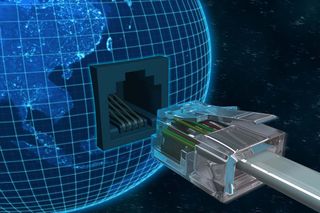Looking for profit in the Internet of Things
Inside the Enterprise: How can CIOs make the most of the opportunities presented by the Internet of Things?

A few years ago now, Orange, the mobile phone operator, demonstrated a new technology. It could link small sensors, via its network, to remote business applications.
One of the first sites it used to demonstrate this was the bars in the Harlequins' stadium at Twickenham. The tiny chips could measure the flow, temperature, and volume of beer dispensed. The idea was that the beer was never warm, flat, or, perhaps most important of all, never likely to run out.
The problem is the Internet of Things encompasses a range of technologies that is so wide, it is almost meaningless.
Then, the technology was known as machine-to-machine (or M2M) communications. Orange, of course, was keen to push the wireless nature of the system: there was no need to build permanent connections between the sensors and the back office systems they reported to.
Other applications included more mundane pieces of equipment as vending machines: using a small M2M chip removed the need to hook the machine up to the internet, but allowed better, more frequent monitoring, and even theft prevention, than a human operative could provide.
Over the intervening decade or so, M2M technology has gradually morphed into the "Internet of Things", or the idea that almost any device can be connected to an ever-expanding, and increasingly autonomous, network.
But many of the applications remain mundane. Monitoring beer taps is perhaps one of the more exciting options: other, more common installations include temperature monitors on air conditioning units, or maintenance sensors on lifts.
This, though, has not stopped the Internet of Things from growing into a sizeable industry in its own right. And, according to a research paper by Gartner, the industry analysts, the technology offers "huge, untapped business opportunities".
Get the ITPro. daily newsletter
Receive our latest news, industry updates, featured resources and more. Sign up today to receive our FREE report on AI cyber crime & security - newly updated for 2024.
The problem or at least one problem, as Gartner correctly identifies it is that the Internet of Things encompasses a range of technologies that is so wide, it is almost meaningless.
For business leaders, identifying how to use IoT technology, or even the more narrowly defined M2M systems, is difficult. These are not broad-brush productivity or efficiency tools, in the way that, say, business intelligence or ERP are. Instead, most IoT projects work best when they are very focused, usually on a specific business problem or process.
As a result, it is more likely that service providers will include IoT technology in systems they implement, rather than companies' IT departments will roll it out. It might even be the case that IoT grows because more connectivity is being embedded in equipment as standard.
Vehicles are an obvious candidate for connecting up to networks and back office systems, and there are already interesting examples of M2M technology in construction equipment and agricultural plant.
And there are massive opportunities in specific verticals such as healthcare, where better connectivity can improve efficiencies and improve patient care, and in areas such as public safety and law enforcement.
And manufacturers are building M2M chips, or IoT technology, into a growing range of everyday technologies, from copiers to coffee machines. Perhaps the real value of the Internet of Things will only become clear, when it's so commonplace that we take it for granted.
Stephen Pritchard is a contributing editor at IT Pro.




